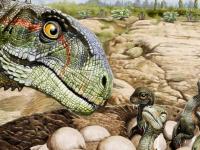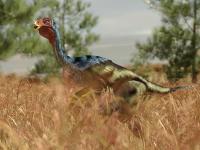Feathers Evolved 80 Million Years Before Birds Appeared

Scientists at the University of Bristol have found evidence of feathers in a dinosaur that existed 80 million years before birds, a discovery that changes how we look at dinosaurs, birds and feathers themselves.
The research, a combination of paleontology and molecular developmental biology, was published in the journal Trends in Ecology & Evolution.
A pair of pterosaur fossils—discovered earlier this year in China—showed signs of both down feathers over the body and long, vaned feathers on the wings. Pterosaurs, a group of bird-like flying reptiles commonly referred to as pterodactyls, lived 228 to 66 million years ago during the Triassic and Cretaceous periods.
The oldest known bird is Archaeopteryx, which is believed to have lived in southern Germany 150 million years ago during the late Jurassic period.
Feathers arose 250 to 230 million years ago, during the Early Triassic, when life was recovering after the end-Permian mass extinction and new species were evolving to fill ecological voids, the study revealed. This is nearly 80 million years before the first bird, a surprise to many researchers who believed that feathers helped drive the success of avian fauna.
"A combination of new fossil evidence and new thinking in genetics of development show us that feathers are not unique to birds, but to a much larger group that includes dinosaurs and pterosaurs. This means feathers actually originated much earlier than thought, and that the original function of feathers was insulation, not flight," Mike Benton, lead author of the study and a professor of Vertebrate Paleontology at the University of Bristol's School of Earth Sciences, explained to Laboratory Equipment. "We are keen to examine a greater range of dinosaurs and pterosaurs to see how widespread the different feather types are, and what we can learn about feather function and color from the fossils."
The findings add to the growing body of work suggesting that birds and dinosaurs are closely related on the evolutionary tree.
In the early 1990s, researchers discovered that some dinosaurs possessed feathers. The first dinosaur fossils to reveal evidence of feathers were approximately the same age as the earliest birds. Previously, it was believed that dinosaurs were most closely related to reptiles.
"This discovery means that the evolutionary selective pressure to evolve feathers was nothing to do with size reduction, raised warm bloodedness and activity levels for flight (which was happening in the Jurassic before Archaeopteryx emerged), but it was all about recovery of life from the devastating end-Permian mass extinction, and a re-tooling of the main land animals to walk upright, be warm-blooded and move faster," Benton said.
Source: www.laboratoryequipment.com








